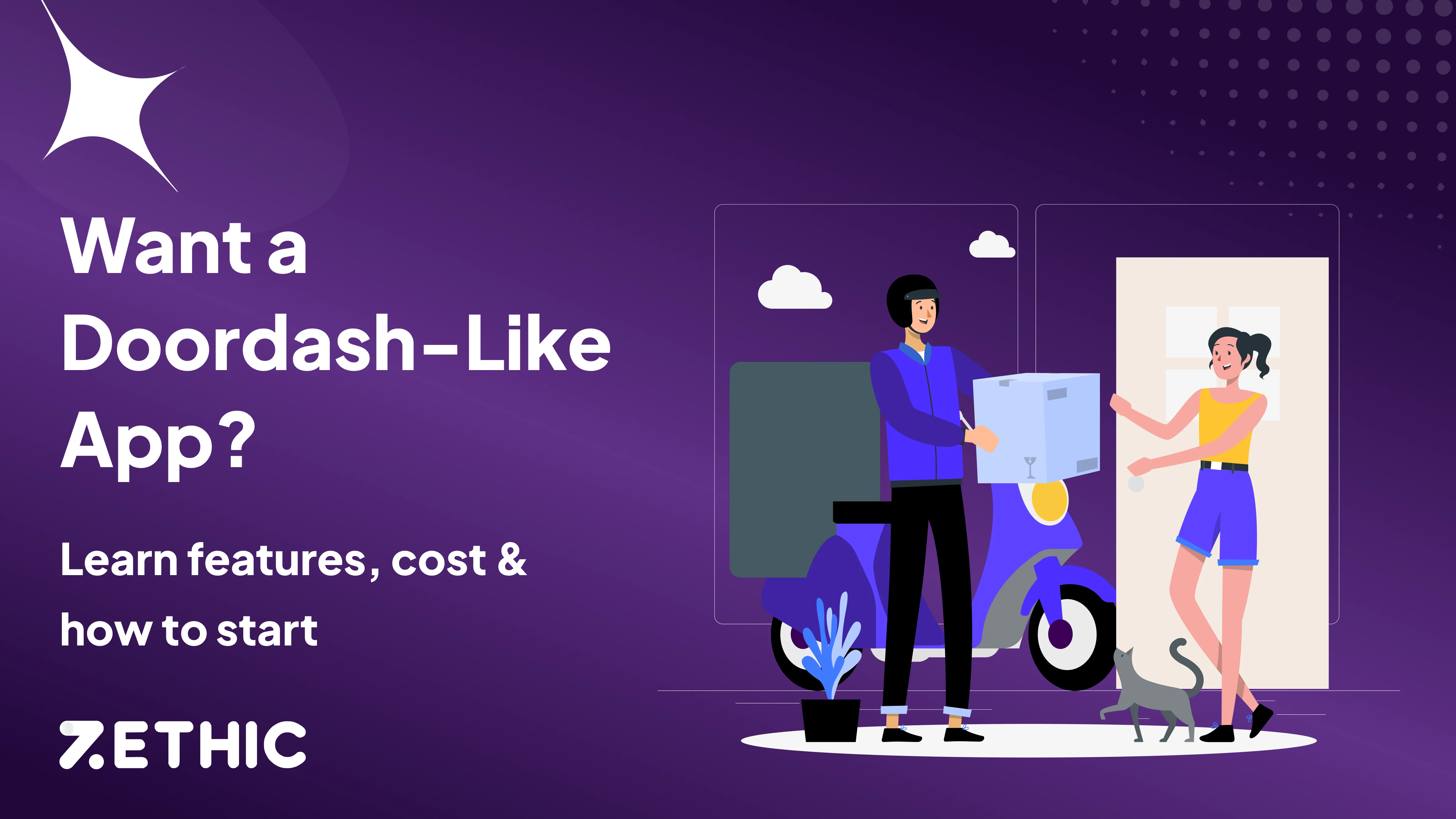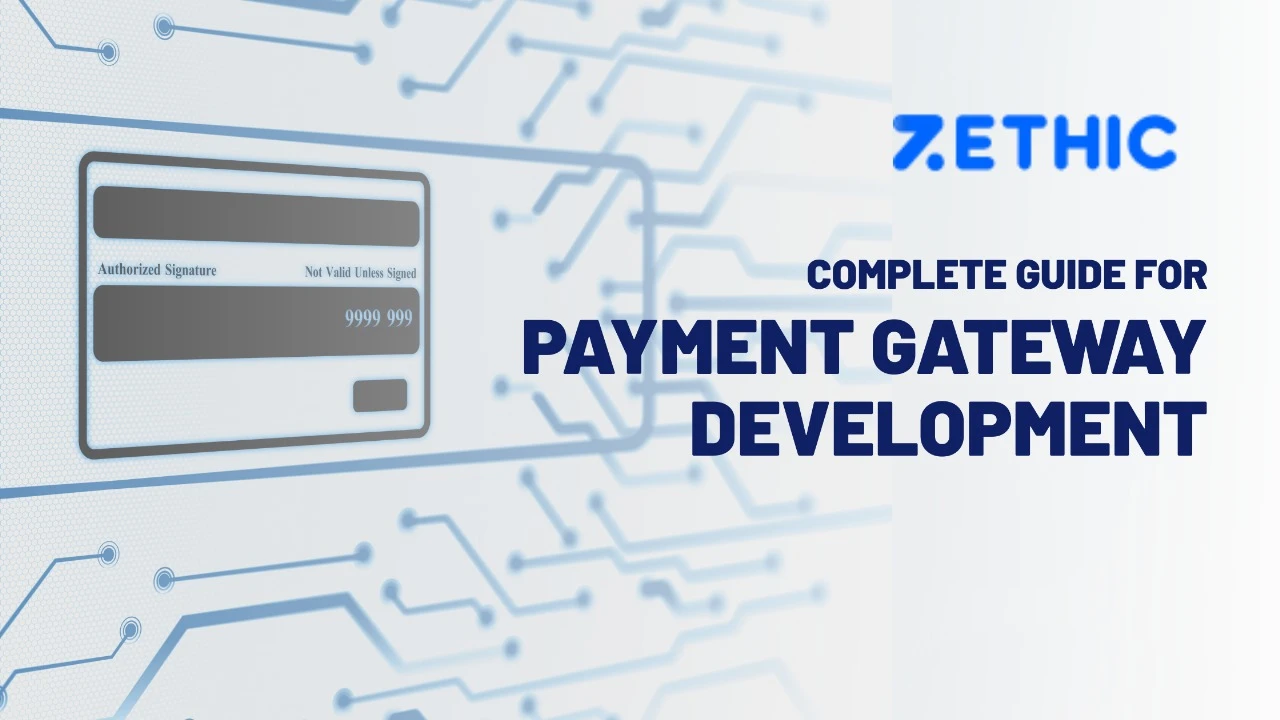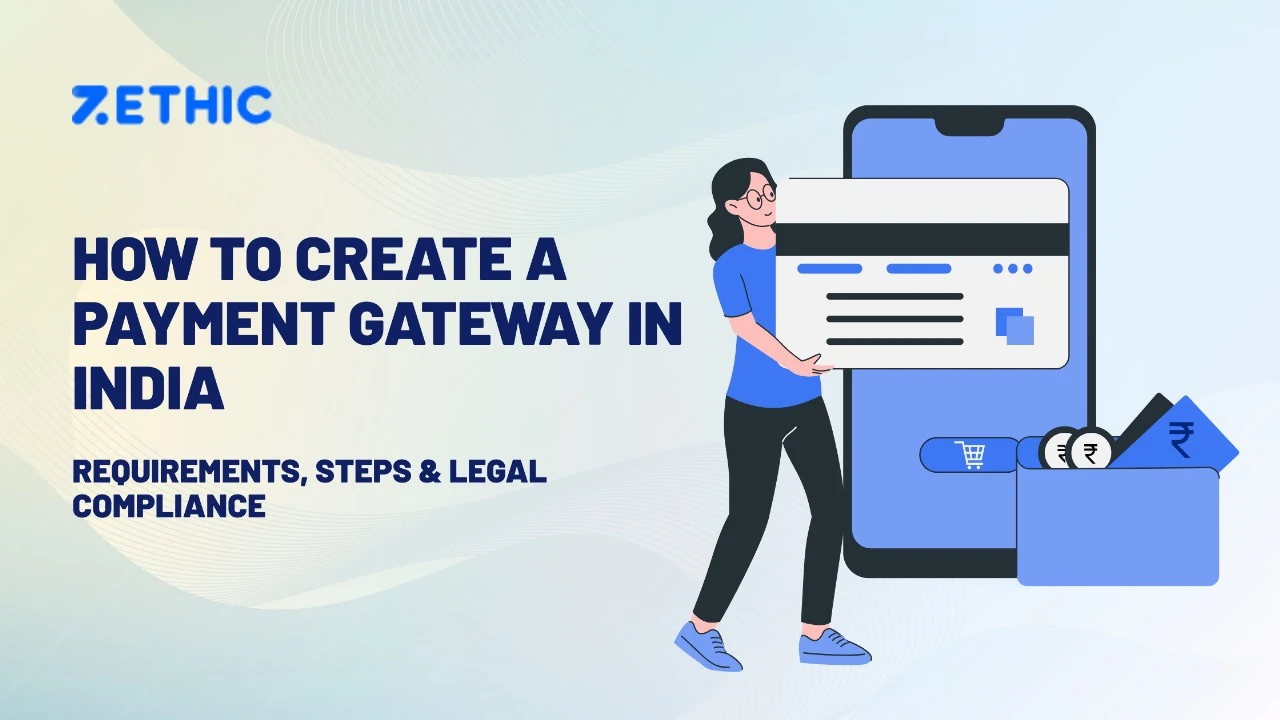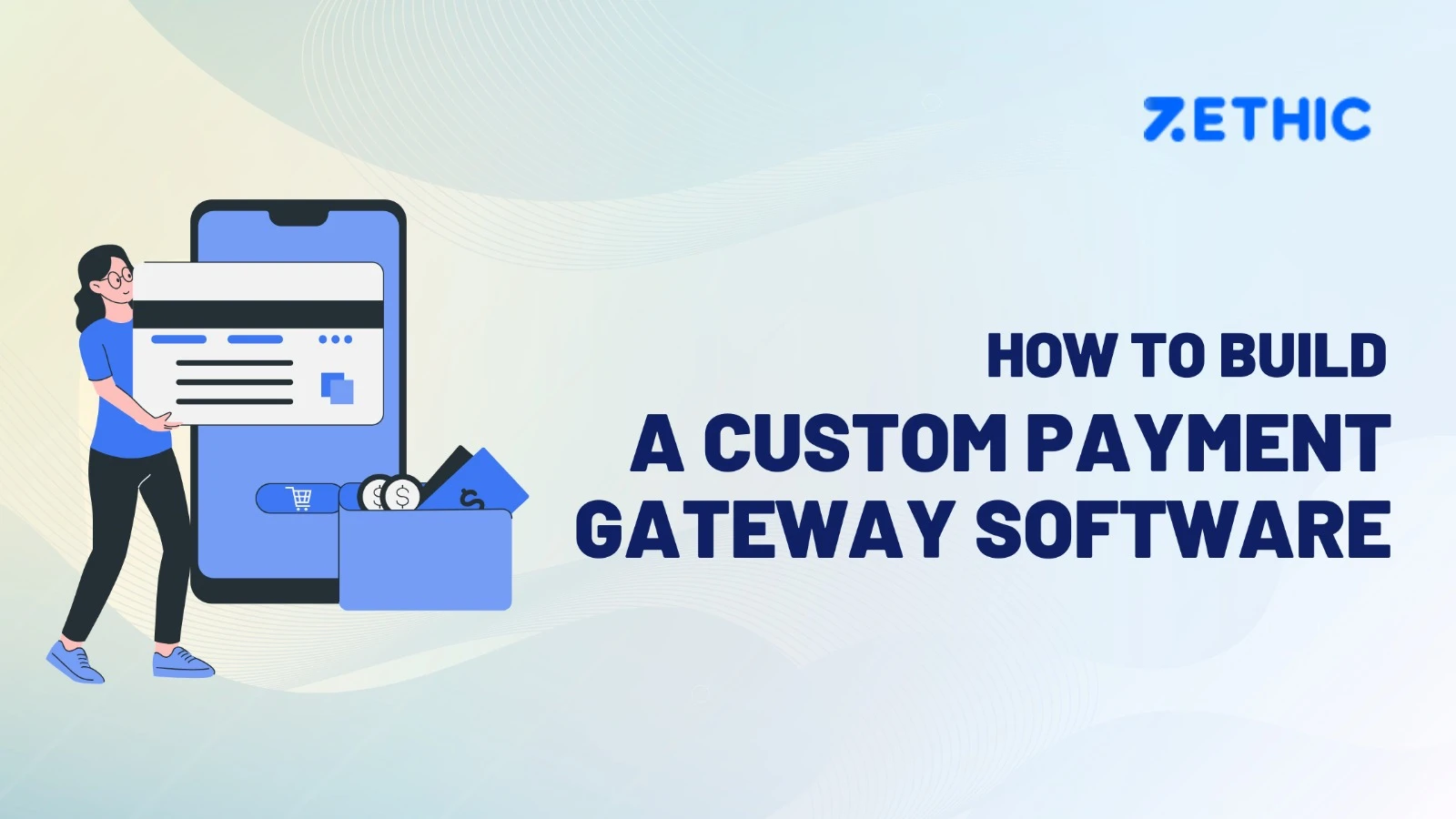The food delivery landscape in the USA has exploded, with online orders expected to reach $430 billion in 2025. Leading the charge, DoorDash holds a dominant 67% market share, serving over 37 million monthly users and partnering with more than 590,000 merchants. It’s no surprise enterprises are now asking: How to Make an App Like DoorDash. Building a Doordash clone app offers massive business potential—but you need the right features, tech stack, and expertise. Flutter shines as a modern framework for enterprise-grade delivery apps that scale seamlessly across platforms.
Partnering with Zethic unlocks fast, efficient Flutter development tailored for USA-based delivery platforms.
Table of Contents
Market Overview: Delivery Services Like DoorDash
- The U.S. online food delivery market is projected to grow from $353 billion in 2024 to $430 billion in 2025, a massive 22% year‑over‑year increase.
- DoorDash dominates with a 67% market share, serving over 37 million monthly active users and processing $20 billion in Q3 2024 gross order value.
- In 2024, DoorDash generated around $10.7 billion in revenue through 80 billion GMV, partnering with 550,000+ merchants and leveraging 7 million delivery agents.
- The CAGR for online food delivery in the U.S. is an estimated 9–13% through 2027, fueled by digital convenience, urban lifestyles, and AI-enabled routing
Apps Like DoorDash: Who’s Winning the Market?
DoorDash holds the lion’s share of the U.S. meal delivery market, commanding around 60–67% market share, thanks to features like AI-driven logistics and broad non-restaurant delivery service.
- Uber Eats is the primary competitor with approximately 23–27% U.S. market share, operating in 6,000+ cities and generating around $13.7 billion in 2024 revenue.
- Grubhub, a veteran with deep local roots, maintains about 8% share, partnering with ~325,000 restaurants and offering Corporate catering options.
- Postmates (now under Uber), known for delivering everything—from food to groceries—serves ~4 million users and operates in close to 3,000 U.S. cities.
- Instacart, focused on groceries, covers 98% of SNAP households via 180+ retail banners and 30,000+ stores through a web and app platform.
- Other niche players like Delivery.com, ChowNow, Gopuff, and Eatstreet each occupy smaller market segments but offer unique services across metropolitan regions.
These apps demonstrate diverse monetization strategies—from commissions, subscriptions, to grocery and retail delivery that enterprise-grade Flutter solutions like Zethic’s Flutter delivery platforms can confidently emulate and customize for large-scale enterprise needs.
Must‑Have Features for a DoorDash‑Like App
For Customers:
- User registration & profile via email, social sign-in, address book, and preferences.
- Restaurant search & filters by cuisine, rating, dietary needs, and distance
- Real‑time order tracking with interactive maps and status push notifications.
- In‑app payments & tips, supporting multiple gateways (cards, wallets, COD).
- Ratings & reviews for both restaurants and delivery agents.
For Delivery Agents:
- Onboarding & ID verification, KYC and document uploads
- Order management & earnings dashboard with history and payout tracking.
- Navigation with route optimization integrated via GPS/maps
- Availability toggles to switch online/offline status.
For Admins:
- Restaurant/vendor management: onboarding, menus, order control.
- Advanced analytics dashboard: orders, trends, cancellations, delays.
- Payment & commission tracking for orders, fees, driver payouts.
- Customer service tools: live chat, complaint handling, notifications
These features form the foundation of a scalable, secure delivery platform ideal for enterprise-level Flutter solutions from Zethic.
Tech Stack: What Framework Does DoorDash Use?
- Microservices backend primarily powered by Kotlin, supported by Node.js, Python, and gRPC/Kafka for inter-service communication.
- Database layer uses PostgreSQL, CockroachDB, Redis, and Cassandra for caching, transactions, and scalable storage
- Infrastructure runs on AWS EC2, moving from Heroku to achieve cloud-level scalability and reliability.
- For the mobile frontend, DoorDash uses React Native on both iOS and Android.
Why Flutter?
Flutter offers a single codebase with native-level performance, faster iteration cycles, and seamless UI consistency—making it ideal for enterprise-grade delivery apps compared to React Native or native-only stacks.
Want to explore Flutter’s impact on your delivery app? Let’s dive deeper or move to the next step!
Step-by-Step: How to Make an App Like DoorDash
Step 1. Market Research & Feasibility Study
- Analyze current market size and growth trends in the U.S. delivery sector—projected to exceed $430 billion in 2025.
- Study competitors (DoorDash, Uber Eats, Grubhub) to identify feature gaps and opportunities.
- Validate your niche—e.g. grocery, corporate catering, ghost kitchens (as DoorDash expanded via ghost kitchen model).
Step 2. Choose Your Delivery & Business Model
- Decide between order-only, restaurant-partnered, or full-stack/ghost kitchen models.
- Select monetization strategies:
- Commission from restaurants (20–30%)
- Delivery fees (fixed or distance-based)
- Subscriptions (e.g. DashPass)
- Advertising or promotions for restaurants.
Step 3. Define Target Users & Roles
- Identify user roles: Customers, Delivery Agents, Restaurants/Vendors, and Admins.
- Map out user journeys: sign-up → browsing → ordering → tracking → feedback.
Step 4. Feature Prioritization & MVP Planning
- Start with core MVP features: registration, search, real-time tracking, in-app payments, ratings.
- For agents: onboarding, earnings, navigation, availability toggles.
- For admins: vendor management, analytics, commission control, support modules.
Step 5. UX/UI Design & Prototyping
- Create high-fidelity wireframes for all user roles and platforms (mobile + optionally web).
- Use design tools like Figma, Sketch.
- Focus on intuitive flows for multi-role experiences—e.g. Dasher pickup mapping, admin dashboards.
Partner with a top UI UX Design Agency in USA like Zethic to craft smooth, user-friendly delivery app designs.
Step 6. Select Tech Stack & Architecture
- Frontend: Use Flutter for unified, cross-platform performance; native-like UI across devices.
- Backend: Microservices architecture using Node.js, Python, or Kotlin—supporting gRPC/Kafka communication.
Databases: PostgreSQL/Cassandra for transactional data; Redis for caching . - Cloud and Infra: Deploy on AWS (EC2, Lambda), Kubernetes for scalability and reliability.
Step 7. API & Third‑Party Integrations
- Include:
- Maps and route optimization (Google Maps API)
- Payment gateways: Stripe, Braintree, PayPal
- Notifications: Firebase Cloud Messaging, Twilio SMS
- Verification: KYC document tools, Auth0 for auth and social login
- Real-time chat between users and support/drivers
Step 8. Core Development Phase
- Setup CI/CD pipelines for Flutter apps, backend services, and testing automation.
- Develop feature modules in parallel: customer interface, delivery agent app, admin panel.
- Implement real-time tracking, order assignment, dynamic pricing modules.
Step 9. Quality Assurance & Testing
- Unit Testing: Verify frontend and backend modules separately.
- Integration Testing: Full workflow tests – signup → order → delivery → rating.
- Performance Testing: Simulate load to ensure system handles peak demand.
- User Acceptance Testing: Get feedback from pilot users (restaurants, drivers, customers).
Step 10. Beta Launch & Pilot Deployment
- Roll out MVP in a controlled geographic region (e.g. one metropolitan area).
- Collect real-world usage data and qualitative feedback.
- Optimize routing, fees, UI flow, and resolve bottlenecks.
Step 11. Metrics Tracking & Analytics Setup
- Integrate analytics (Mixpanel, Google Analytics) to monitor activation, conversion, churn.
- Backend logs: track daily active users, completed orders, average delivery time, revenue metrics.
Step 12. Scale Up & Expand Features
- Add advanced features like:
- Surge/dynamic pricing
- Subscription programs
- Multi-language and localization
- Promotional and loyalty systems
- AI‑enhanced routing and ETA prediction (leveraging ML models).
13. Post-Launch Support & Optimization
- Regular updates with bug fixes, UI improvements, performance enhancements.
- Infrastructure auto-scaling to handle peak traffic.
- Ongoing delivery optimization and fraud/security monitoring.
14. Growth Strategy & Marketing Execution
- Launch incentive campaigns: free delivery trials, signup discounts.
- B2B partnerships with high-traffic enterprises, ghost kitchens, grocery chains.
- Use targeted marketing, referral programs to drive adoption.
15. Compliance, Security & Legal Framework
- Ensure end-to-end encryption for payments, data storage.
- Implement KYC protocols and document compliance.
- Adhere to local regulations, labor laws for gig workers, and data privacy acts (CCPA, etc.).
How Much Does It Cost to Make an App Like DoorDash?
- Basic MVP with essential features ranges from $30,000–$50,000.
- Feature-rich delivery platform costs approximately $50,000–$100,000+.
- Enterprise-grade app with advanced analytics, AI, and real-time tracking can reach $100,000–$180,000+.
Explore more on mobile app development cost for detailed budgeting guidance. Cost-effective Flutter development reduces time-to-market by up to 40%.
Ready to estimate your delivery app budget?
Connect with Zethic for a tailored quote and cost-effective development plan.
Why Choose Zethic for Doordash Clone App Development?
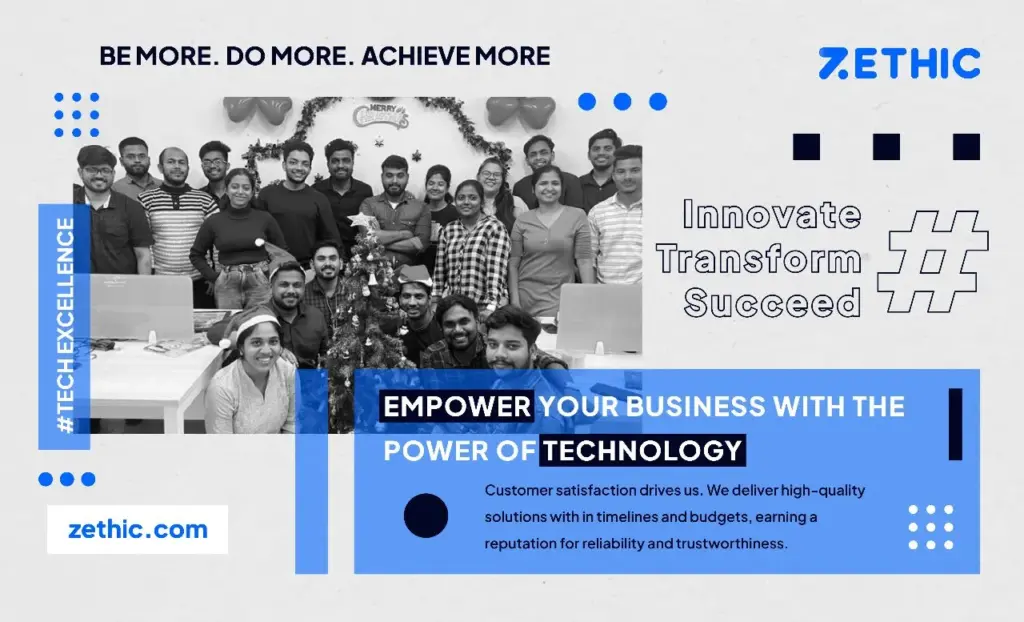
- Proven Flutter app development service in USA and India—efficient, scalable, and cost-effective.
- Deep expertise in mobile app development, delivering enterprise-grade solutions with microservices, cloud infrastructure, and AI-ready architecture.
- Fast time-to-market, reusable components, and ongoing support—ideal for large companies seeking a reliable delivery platform partner.
Ready to lead the delivery revolution? Partner with Zethic for your next-gen mobile app development.
Conclusion
Building a DoorDash-like app in 2025 requires smart tech, clear strategy, and expert delivery. With Zethic’s Flutter-driven approach, your enterprise gains a powerful, cross-platform solution designed for scale and efficiency.

